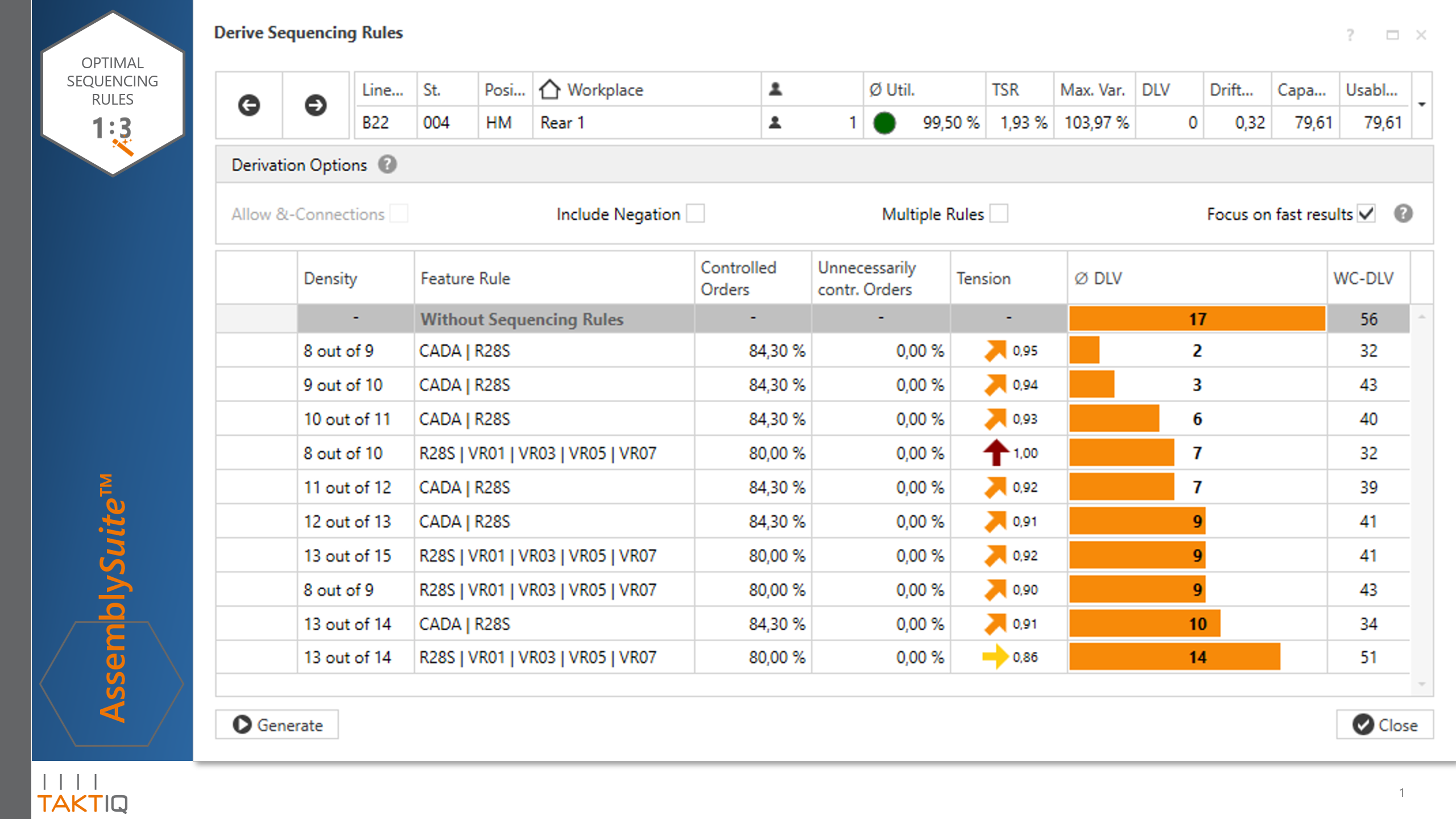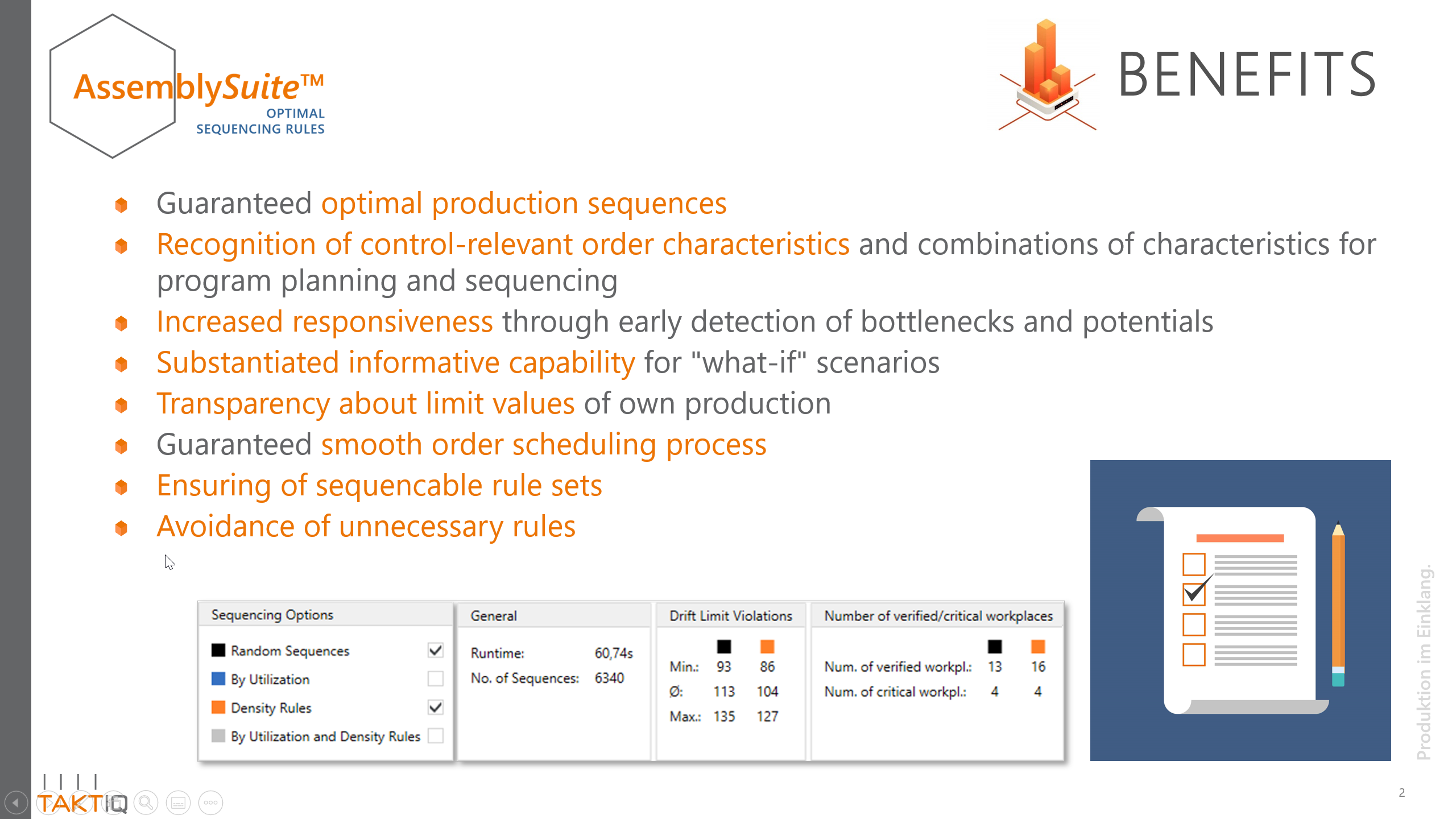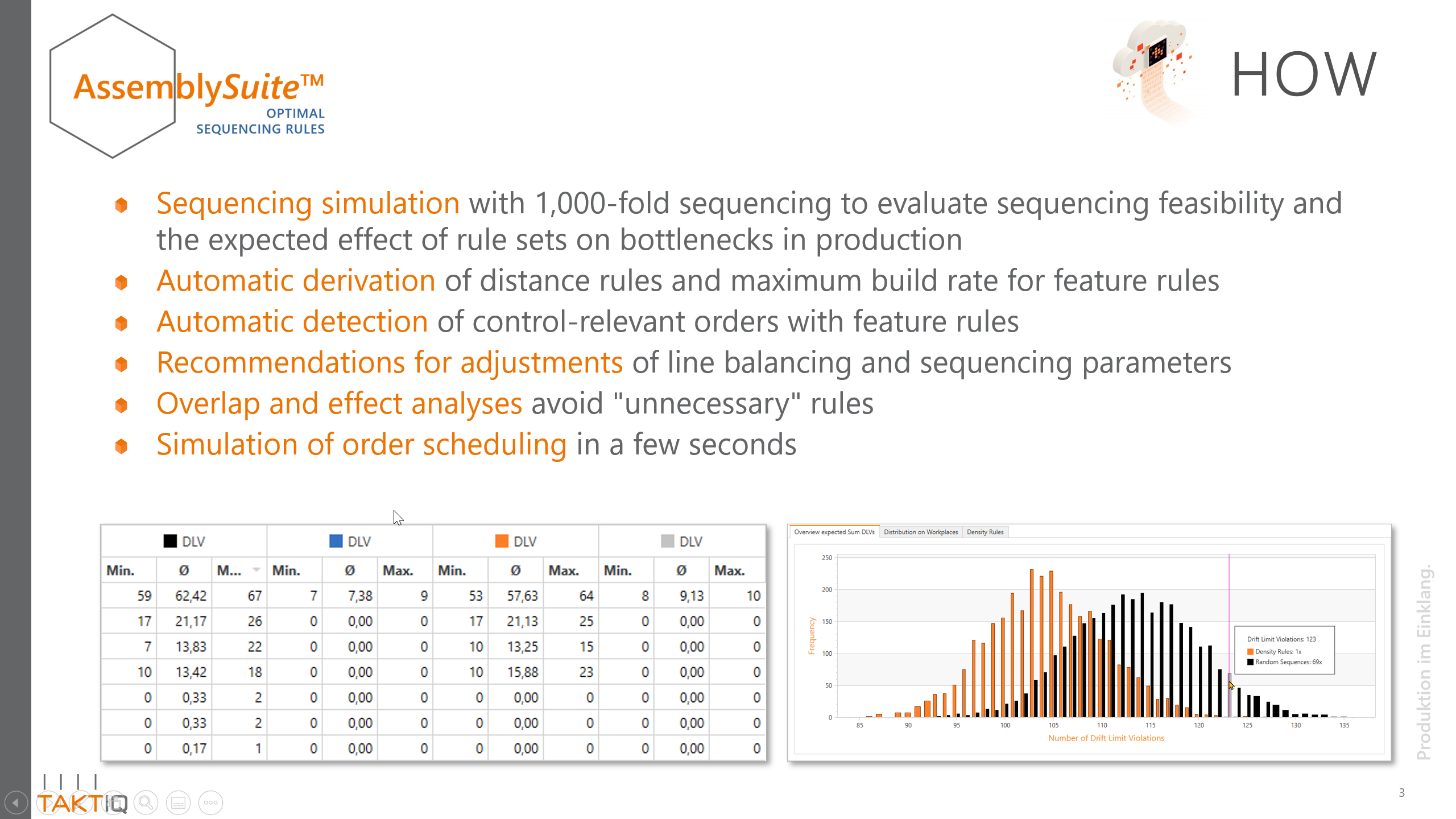Sequence Requirements
The Best Sequencing Rules Are Already in Your Data
Density rules such as the “right- hand drive more than 1 out of 2” ensure the needed relief if dealing with highly fluctuating processing times of varied products. These rules are an effective tool for accomplishing a levelled and steadied production. Prerequisite is the use of the right rules: to determine those is a real mammoth task for millions of variants on hundreds of stations. Not to mention the fact that rules have to be adapted for every task move.
The sequencing rule derivation uses all available orders and line balancing data to analytically determine the optimal sequencing rules for a leveled production process. Questions like “Which order variants are problematic on which stations?” can be answered at the push of a button. Sequencing rules are determined automatically for each station. Several alternatives are proposed for each rule. Simulations help to assess the results with regard to bottlenecks in the best, worst and average case.
Recognize the Need for Changes and Proactive Adjustments
We take into account all the complex order and line balancing data to establish a set of rules for an entire line. This prevents individual rules from overlapping or becoming so intertwined that it is no longer possible to find an error-free sequence. The result is a maximally effective and sequenceable set of rules.
In case of changes in the line balancing and adjustments of the order program, all rules have to be checked again. This should, of course, take place before any changes affect your production. Using the sequencing rule derivation, you can check proactively how these changes of the order programs can affect the rule set. Further, you will get information on the status of the rules. You will know exactly which rules have become obsolete, which rules have to be tightened and which rules can be disregarded. Our approach provides the necessary information before any problems occur in your production.
Rules by Intuition
“We believe that all difficult orders consist of right-hand drive vehicles. The maximal occurrence should be 1 out of 3. A take rate exceeding 33%, so 1 out of 2, is still better than nothing.“
Analytical Sequencing Rule Derivation
“The v6 diesel engine for a right-hand drive variant strains the workstation to 147%. An average of 95% of bottleneck situations can be avoided by regulating the occurrence of these right-hand vehicle orders to 2 out of 5.“
Software Implementation and Services
Use the AssemblySuite to get the best support in the derivation of sequencing rules. Find critical product variants, determine the necessary densities and communicate the results transparently to all parties. Multiple visualizations and sensitivity analyses are meant to point out the necessity and function of each and every rule in great detail.
As an alternative to install the software application and derive the rules by yourself, we offer to find the best rules for you. Based on your data, we supply you with information on the control of production critical order variants and an optimal set of rules. We analyze and compare existing sequencing rules and transparently indicate optimization potential. Once as a service or on a regular basis for every line balancing or order program change.
Get To Know the Individual Modules of the AssemblySuite
The AssemblySuite™ is a module-based software that consists of different modules that include multiple application components for particular planning problems. All components can either be used individually or can be combined.


